Famous art masterpieces updated to reflect today’s burning love affair with smartphones
Smartphone addiction is real. In the US, the average user reaches for their phone 150 times a day and a 2016 study estimates that we tap, swipe and click on our devices 2,617 times each day. This all-too familiar epidemic of the social media age is so alarming that researchers have compared the compulsion to check our phones to substance abuse.
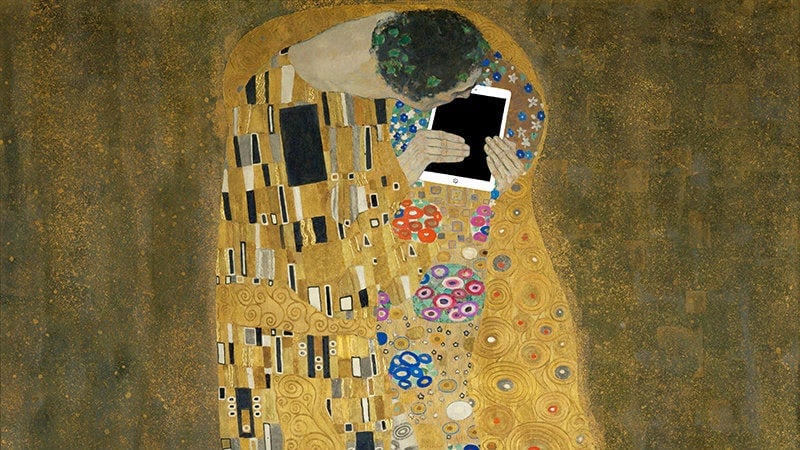

Smartphone addiction is real. In the US, the average user reaches for their phone 150 times a day and a 2016 study estimates that we tap, swipe and click on our devices 2,617 times each day. This all-too familiar epidemic of the social media age is so alarming that researchers have compared the compulsion to check our phones to substance abuse.
The universal malady struck a chord with South Korean designer Kim Dong-kyu, who tells Quartz that he was deeply bothered by how much people obsessed over their phones—often to the point of missing out on real-world experiences. “Smartphones emphasize connection and communication,” Dong-kyu muses.”But in reality, it seems that only severance [alienation] and superficiality remain.”
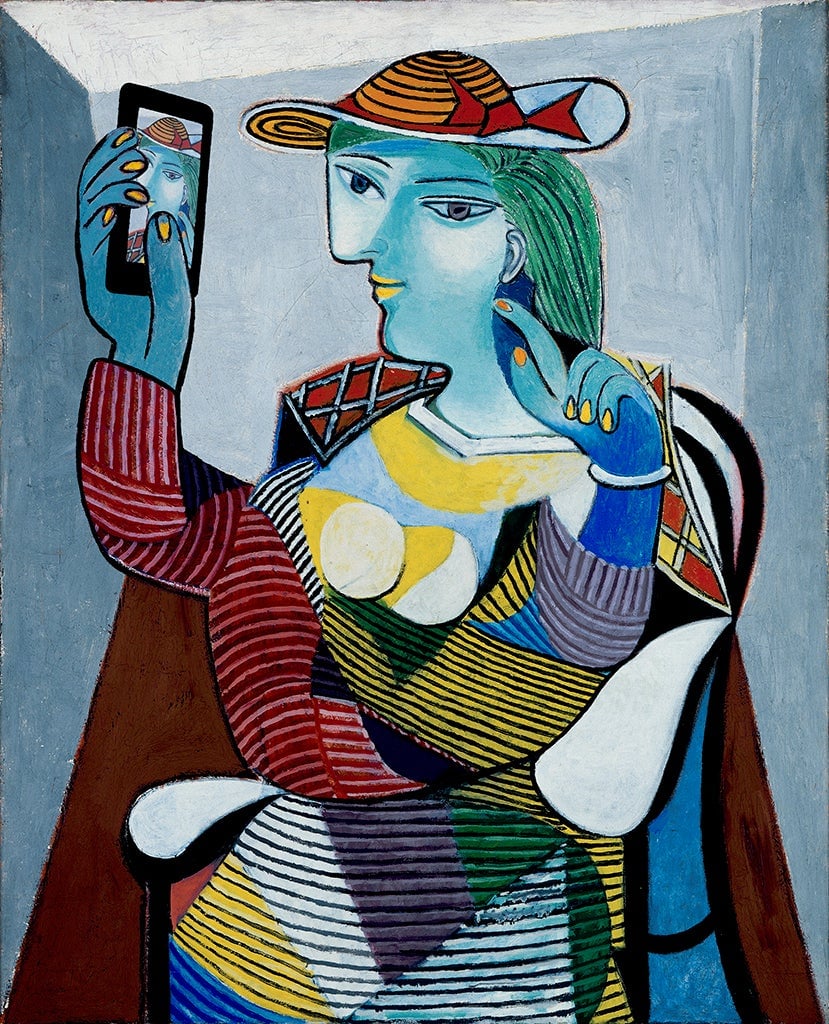
Dong-kyu has created humorous alternate scenarios for masterpieces by famous artists such as Leonardo da Vinci, Gustav Klimt, Édouard Manet and Pablo Picasso. With his considerable Photoshop skills, the designer slyly inserted phones and tablets into the composition. Dong-kyu, who in fact works for a mobile phone start-up, says the series is meant to skewer the smartphone craze that plagues this generation.
In Dong-kyu’s version of da Vinci’s The Last Supper, every apostle brought their device to the table. Bartholomew with the Beats by Dre headphones, James and Andrew brought an Apple laptop, while Tomas tries to show Jesus his Facebook page. With eyes cast downward, the Messiah is too preoccupied with his own flip phone to pay him any heed, though.
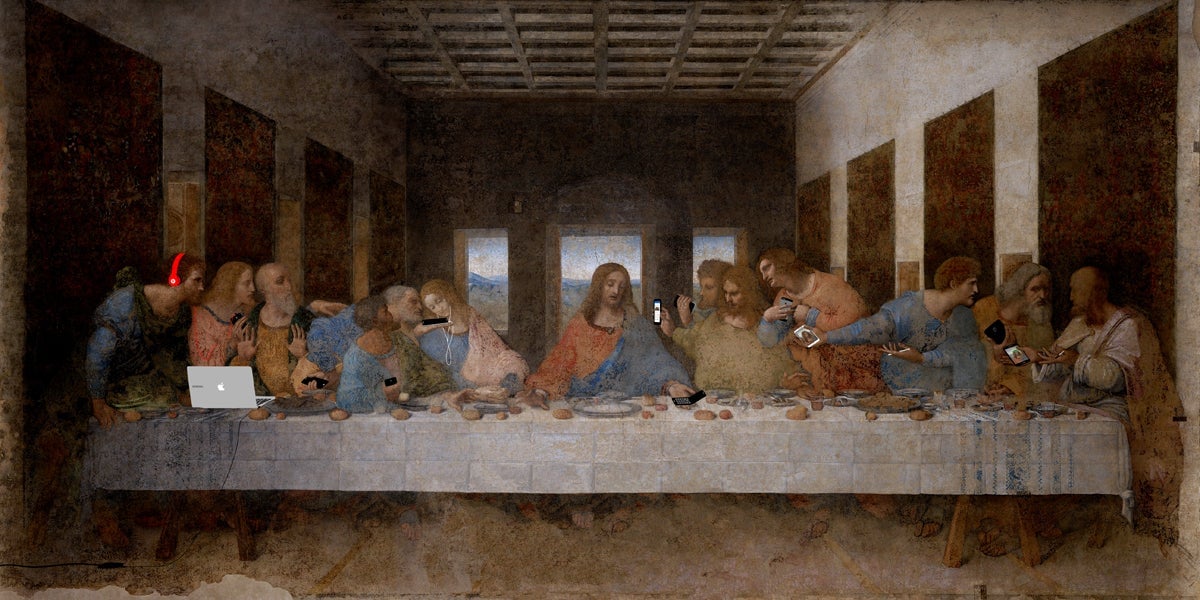
In Jacques-Louis David’s 1784 allegorical opus Oath of the Horatii depicting three brothers about to embark on a noble war, Dong-kyu replaces the swords held by their grieving father with an iPad and an Apple watch—today’s most potent weapons of mass distraction.
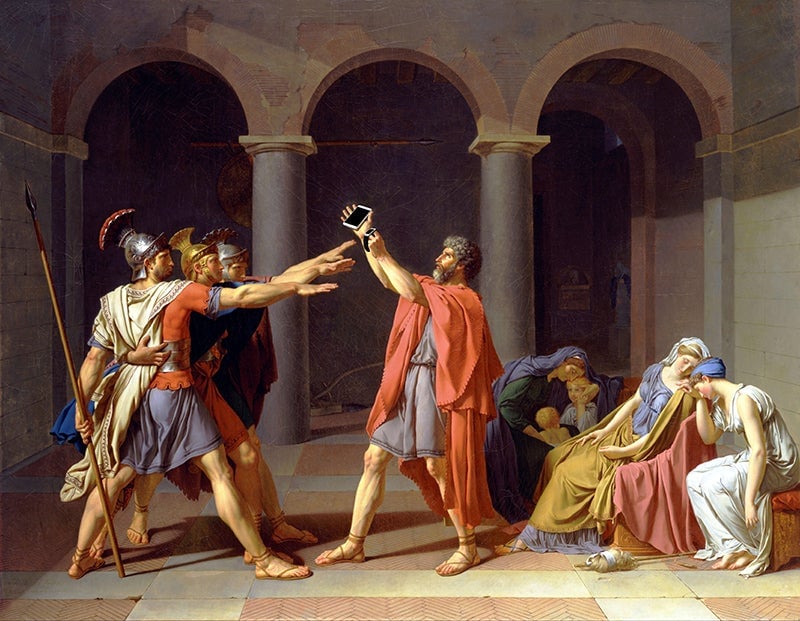
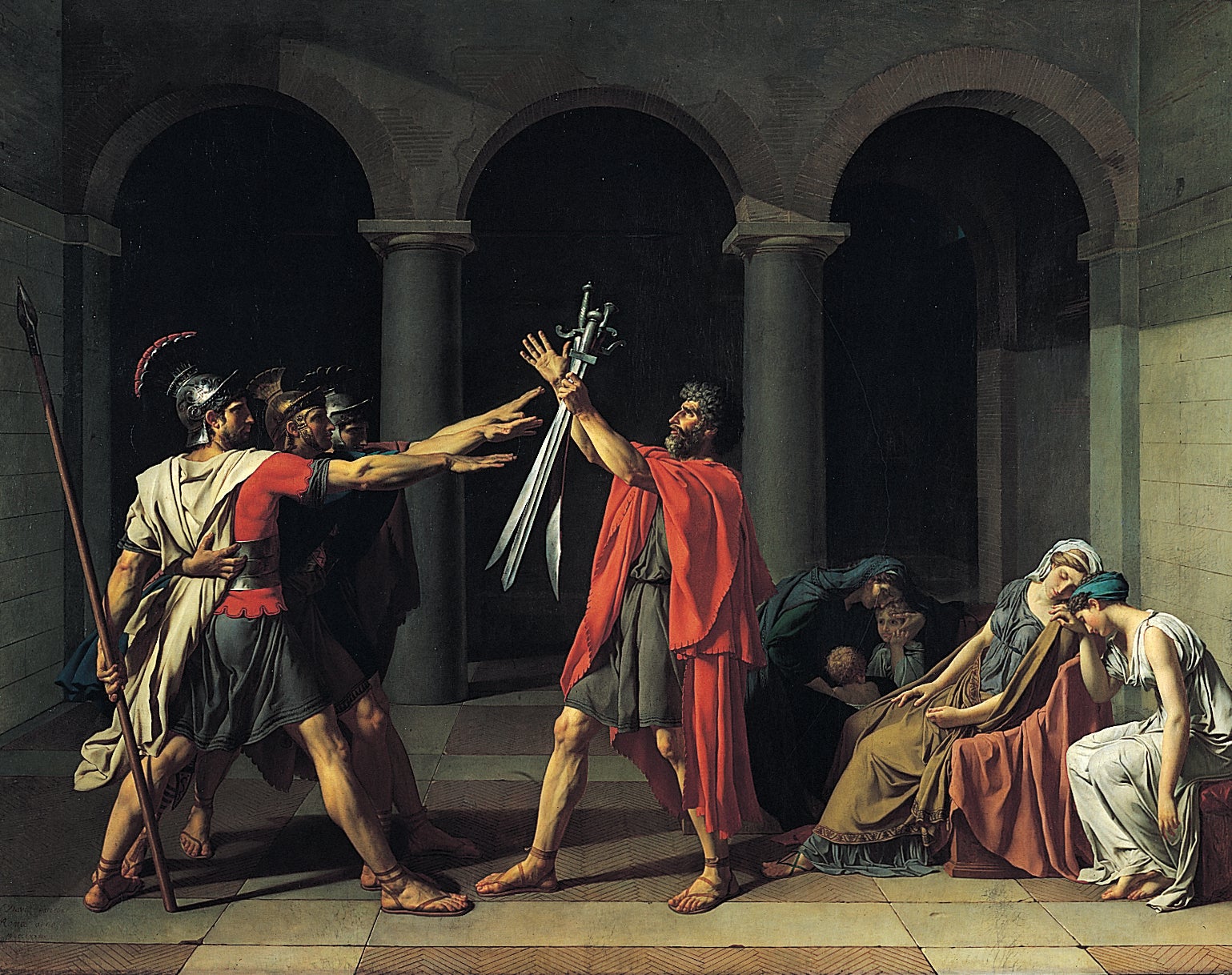
And in Caspar David Friedrich’s contemplative Wanderer above the Sea of Fog, Dong-kyu paints in an outstretched arm with the central figure taking a photo of the mountaintop scene.”I changed it so you can only see him thrusting a smartphone camera to the fabulous scenery,” he explains. “Just like a modern person.”
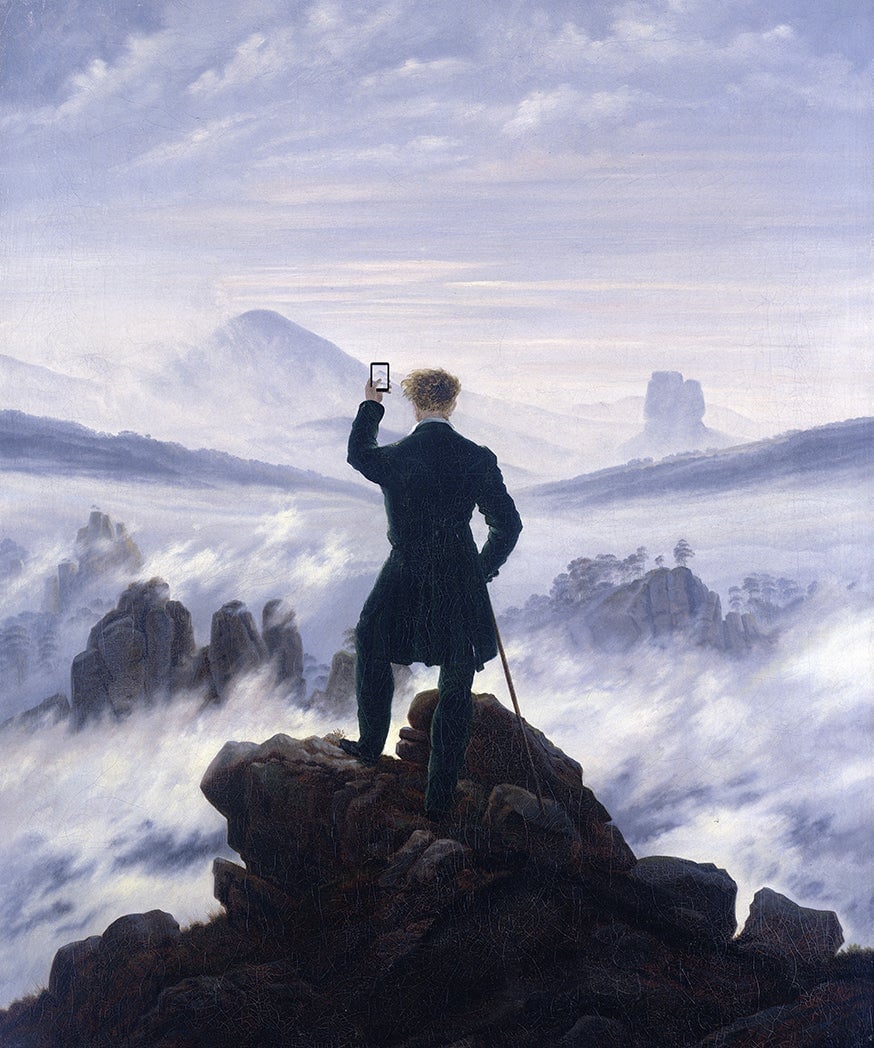
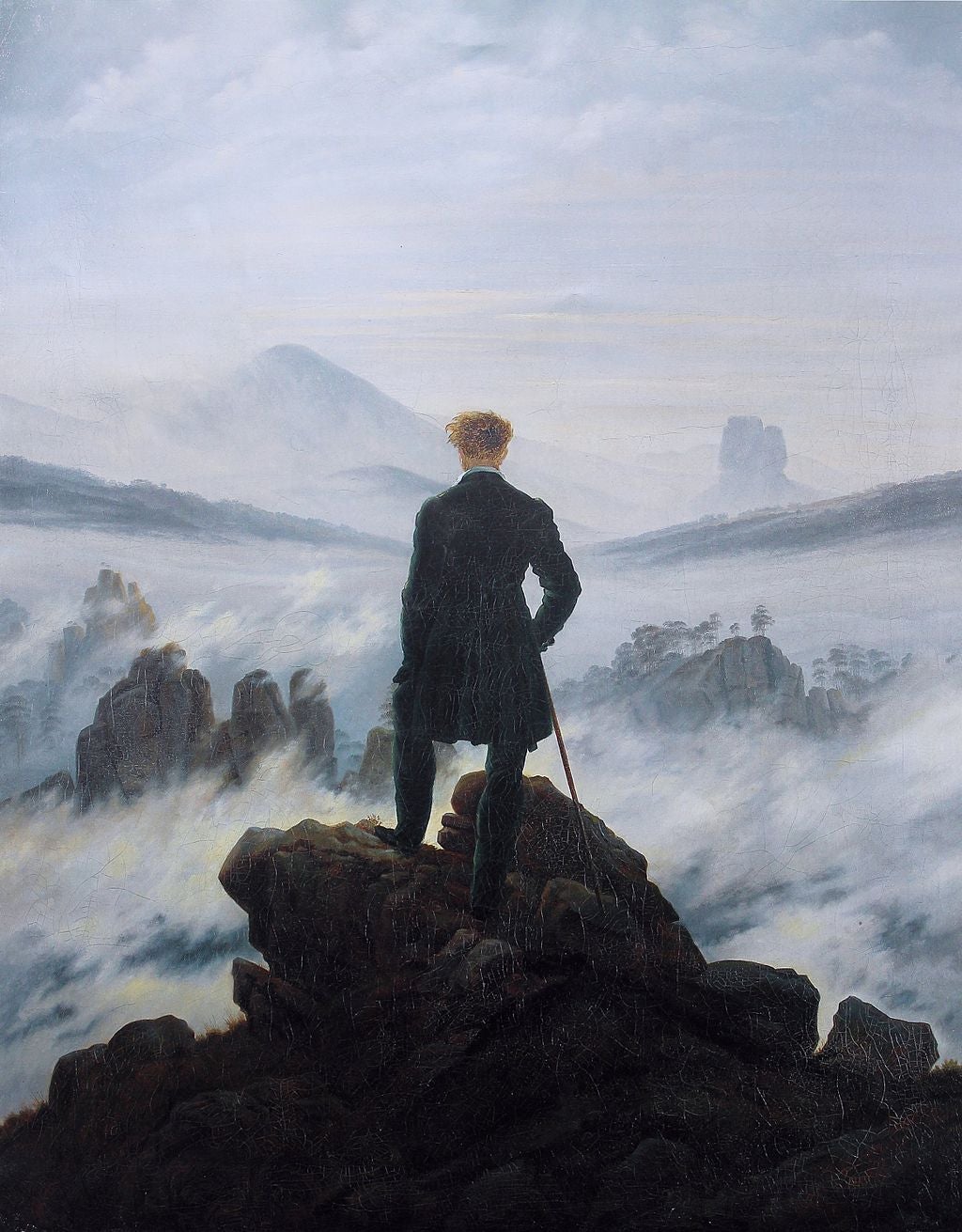
Similarly, he depicts technology defeating nature in an altered Mary Cassatt portrait featured on the cover of this week’s New York magazine. “We can find a lovely girl sitting in a flower garden, but in my work, there is only a teenage girl cutting herself off from the world,” Dong-kyu explains.
Dong-kyu says that he created the 28 altered images in a flurry over the summer of 2013 and published them on his Tumblr. While the textbook sampler of Western art he chose are timeless, the tech devices in Dong-kyo’s compositions date his work. The girl in Mary Cassatt’s painting above, for instance, is staring at what appears to be a 2012 Samsung Galaxy Nexus mobile phone and still using outdated wired earphones.